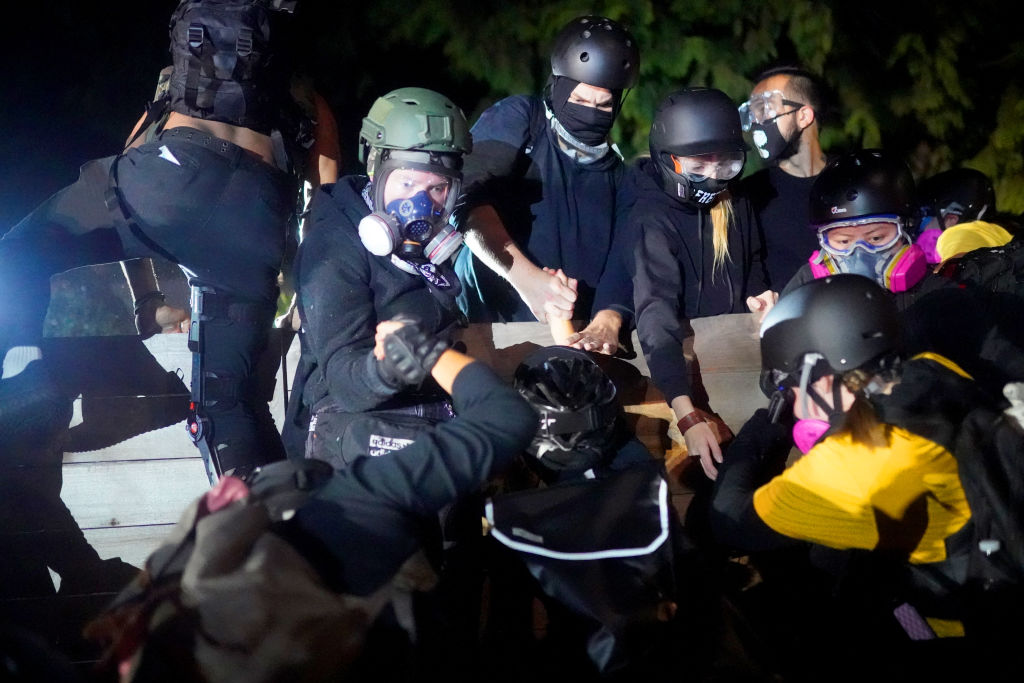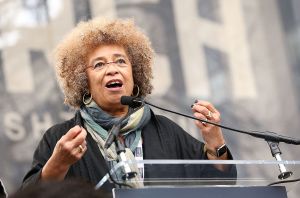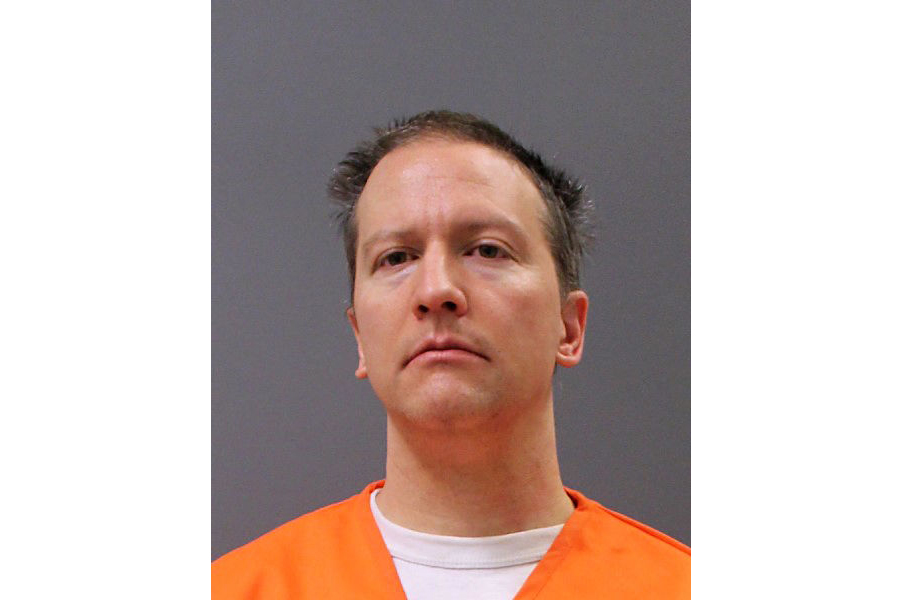Some conflicts begin with clear aims but morph into endless battles, the original motives forgotten. The timeless metaphor for self-sustaining battles is Jarndyce and Jarndyce, the inheritance case at the heart of Charles Dickens’s Bleak House. ‘Jarndyce and Jarndyce drones on,’ he wrote. ‘This scarecrow of a suit has, over the course of time, become so complicated, that no man alive knows what it means… Innumerable children have been born into the cause; innumerable young people have married into it; innumerable old people have died out of it.’
Now we have Portland v. Public Order. What Jarndyce was for the law, Portland is for the lawless. For over two months, young demonstrators have gathered each night in Oregon’s largest city. It began as a protest against police mistreatment of African Americans after George Floyd died in Minneapolis police custody and has morphed into a festival of violent nihilism, tinged with Marxism.
Across America, demonstrators have demanded police reforms and, quite often, dramatic cuts to law enforcement budgets — and the Democratic politicians who govern nearly all major cities have been woolly in their response. The demonstrations themselves were generally peaceful during daylight hours and often violent at night. Some protesters made political points, painting slogans on walls, pulling statues off pedestals. Others simply engaged in mindless destruction, such as defacing statues of abolitionists, or greedy opportunism. There’s nothing political about smashing store windows and grabbing an armful of shoes, computers, or TVs. Or about torching the corner grocery store.
In most cities, the violence and looting ended, leaving boarded-up buildings, permanently closed stores and restaurants, livelihoods destroyed. Feckless city councils showed solidarity by cutting police funding (‘reimagining public safety’); meanwhile, cops refuse to leave their cars and actively patrol the streets in places. Predictably, the worst impact has been in minority neighborhoods, where street violence has worsened.
The most dramatic images come from leftist enclaves on the West Coast. In Seattle, activists associated with Black Lives Matter and antifa seized several downtown blocks and held them for three weeks. Armed vigilantes dominated the area and extorted payments from captive businesses. Seattle’s idiot mayor, Jenny Durkan, said the demonstrators had begun a ‘summer of love’ and prevented police from removing the thugs until a few people at the lovefest were murdered.
Although the Capitol Hill Autonomous Zone is now gone, the violence has not ended. Meanwhile, Seattle police remain tightly constrained, their budgets threatened. No job is more difficult or dangerous than urban policing. In Seattle and many other cities, officers do their jobs in the face of outright contempt from city leaders. Seattle’s police chief, Carmen Best, acknowledged this when she told the city’s residents the police could no longer protect them. How long will the city’s voters accept this failure of elected leadership?
In Portland, there is no coherent political movement — no approximation, for example, of the civil rights march Martin Luther King led from Selma to Montgomery. That had two clear goals: to demand legal equality for blacks and to show America that their peaceful petition would be met with violence by Alabama’s elected officials and police. The confrontations were captured in powerful photos and film footage and galvanized national support. But the riots in Portland are ferocious primal screams, directed at the US courthouse as a symbol of law and order. Arsonists have repeatedly tried to burn it down and attacked the officers protecting it. They’ve set fires each night, hurled rocks, bricks, weighted bottles and Molotov cocktails at federal officers, and shone lasers in the officers’ eyes, causing permanent damage.
Such actions signify nothing but rage. No one can state their goals. The real question is whether the riots will be self-defeating; whether they will unleash a quiet demand for more policing to reestablish public order.
The behavior of Portland’s elected officials has been almost as bizarre and noxious as the rioters’. The first duty of any government is to ensure public order, to keep the thin veneer of civilization in place. In a constitutional democracy, this order has specific features. The laws must be democratically made, and authorities must use proper procedures to enforce them.
When Portland mayor Ted Wheeler and Oregon governor Kate Brown caved to the mobs, they ignored these fundamental principles. Mayor Wheeler refused the federal government’s request to clear the public park opposite the courthouse, where the rioters assembled, denying federal officials the right to arrest violent protesters. Until early August, Gov. Brown refused to let the state’s National Guard cooperate with federal officers, who were outnumbered and under siege at the courthouse. When she finally permitted that cooperation, the attacks around the federal court house subsided, only to spring up elsewhere in Portland, where Mayor Wheeler again refused to confront them.
Surely there will be consequences in Portland, Seattle, Minneapolis, New York, Los Angeles, and other cities where leaders have refused to push back against these forces of disorder parading as moral righteousness. The mayors’ inaction devastates the very communities they are sworn to protect and defend.
And what about the Democratic party, to which these mayors and governors belong? The party has moved significantly to the left, and, whatever their personal views, its leaders understand that shift. They know how strong the activist left is. They’ve seen long-term incumbents defeated by unknown socialist candidates backed by Bernie Sanders and Alexandria Ocasio-Cortez. It’s not surprising that Democratic party leaders have kept quiet.
Americans will listen to reasonable calls to reform policing and they certainly want color-blind law enforcement. But they won’t tolerate frontal assaults on law enforcement or the collapse of public safety. They won’t accept the specious claim that hoodlums tossing firebombs are ‘freedom fighters.’
Citizens will respond at the ballot box, the gun store (where sales have sky rocketed), and the U-Haul counter, where they are renting vans to move to safer places. Polls show that across all racial and ethnic groups, people want more, not less, police presence in their neighborhoods. And they will want political leaders who understand this.
Charles Lipson is the Peter B. Ritzma Professor of Political Science Emeritus at the University of Chicago. This article is in The Spectator’s September 2020 US edition.

























